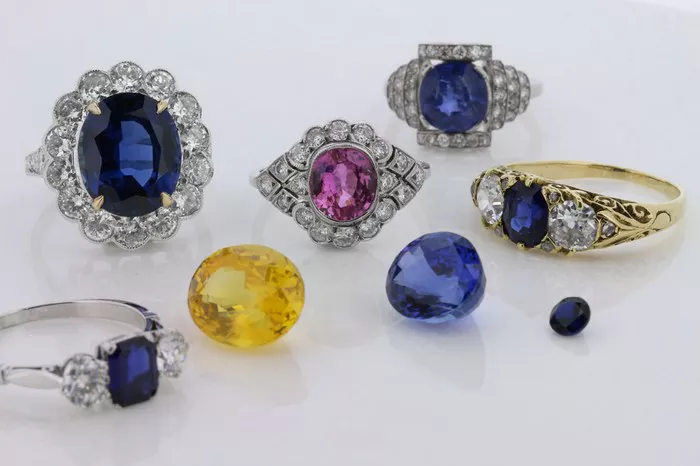In the world of gemstones, few hold the allure and mystique of sapphire. Known for its captivating blue hues, this gemstone has a rich history that spans centuries. From ancient civilizations to modern-day luxury, the popularity of sapphire has endured the test of time. But when exactly did sapphire rise to prominence in the world? To answer this question, we must embark on a journey through history, exploring the cultural, social, and technological factors that contributed to the gemstone’s ascent.
Ancient Beginnings
The story of sapphire’s popularity begins in ancient times, where it held significant cultural and symbolic value. The earliest records of sapphire date back to around 800 BCE in the ancient Near East, particularly in regions such as Persia (modern-day Iran) and India. In these civilizations, sapphire was revered for its perceived mystical properties and association with royalty and divinity.
Ancient Persians believed that the Earth rested on a giant sapphire, which reflected its blue hue onto the sky. This belief not only underscored the gemstone’s importance but also contributed to its association with the heavens and spiritual realms. Similarly, in ancient India, sapphire was linked to various deities and was often worn as an amulet for protection and spiritual enlightenment.
Medieval Europe: The Age of Kings and Queens
As civilizations evolved and trade routes expanded, sapphire found its way to medieval Europe, where it became synonymous with royalty and nobility. During the Middle Ages, sapphires adorned the crowns, scepters, and jewelry of monarchs across the continent. The gemstone’s deep blue color was seen as a symbol of power, wealth, and prestige, further solidifying its place among the elite.
One of the most famous sapphires from this period is the “St. Edward’s Sapphire,” which is part of the British Crown Jewels. This historic gemstone, believed to have been set in the coronation ring of King Edward the Confessor in the 11th century, serves as a testament to the enduring allure of sapphire among European royalty.
The Renaissance and Beyond: Artistic Renaissance
The Renaissance period marked a cultural and artistic rebirth in Europe, and sapphire continued to play a prominent role in the adornment of the elite. During this time, advancements in gem-cutting techniques allowed for the creation of more intricate and dazzling jewelry designs. Sapphire, with its inherent beauty and durability, became a favored gemstone among Renaissance artisans and patrons.
One notable example of sapphire’s popularity during the Renaissance is the “Sistine Chapel Ring,” a papal ring adorned with a large sapphire that was commissioned by Pope Julius II in the early 16th century. This exquisite piece of jewelry not only showcased the craftsmanship of the era but also highlighted the enduring appeal of sapphire among the religious and political elite.
The Age of Exploration: Global Trade and Discovery
The 17th and 18th centuries saw the rise of global exploration and trade, leading to the discovery of new sources of sapphire around the world. European merchants and adventurers ventured to distant lands in search of exotic goods, including precious gemstones like sapphire. This era of exploration not only expanded the availability of sapphire but also introduced new varieties and colors to the market.
One of the most significant developments during this time was the discovery of sapphire deposits in modern-day Sri Lanka (formerly known as Ceylon). Sri Lankan sapphires, prized for their exceptional color and clarity, quickly became sought after by gemstone connoisseurs across Europe and Asia. The influx of Sri Lankan sapphires into the market further fueled the gemstone’s popularity and cemented its status as a luxury item.
The Industrial Revolution: Innovation and Accessibility
The 19th century brought about profound changes with the advent of the Industrial Revolution. Advances in mining, manufacturing, and transportation revolutionized the gemstone industry, making sapphire more accessible to a broader range of consumers. Improved mining techniques allowed for the extraction of sapphire from previously inaccessible regions, while technological innovations in gem-cutting and polishing led to greater precision and efficiency in the creation of sapphire jewelry.
One of the most notable developments of this period was the introduction of synthetic sapphire. In 1902, French chemist Auguste Verneuil developed a method for creating synthetic corundum, the mineral that comprises sapphire, in a laboratory setting. This breakthrough made sapphire more affordable and readily available to consumers, democratizing access to this coveted gemstone.
Modern Times: From Hollywood Glamour to High-Tech Applications
In the 20th and 21st centuries, sapphire continued to captivate audiences around the world, transcending its traditional role as a symbol of wealth and status. In Hollywood, sapphire became synonymous with glamour and sophistication, adorning the jewelry of iconic figures such as Elizabeth Taylor and Audrey Hepburn. The allure of sapphire on the silver screen further solidified its status as a timeless symbol of elegance and luxury.
Beyond the realm of fashion and entertainment, sapphire found new applications in high-tech industries such as electronics and aerospace. Due to its exceptional hardness and durability, synthetic sapphire is used in the production of smartphone screens, camera lenses, and even space shuttle windows. This diversification of sapphire’s uses underscores its versatility and enduring appeal in the modern world.
Conclusion
In conclusion, the popularity of sapphire has been a story of resilience, adaptation, and enduring allure. From its ancient origins in the cradle of civilization to its modern-day applications in cutting-edge technology, sapphire has captured the imagination of humanity for millennia. Whether adorning the crowns of kings or the screens of smartphones, sapphire continues to shine bright as a symbol of beauty, prestige, and innovation. As we look to the future, one thing is certain: the timeless allure of sapphire will continue to inspire and captivate generations to come.


